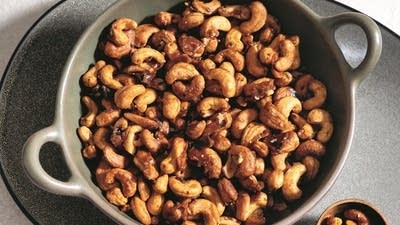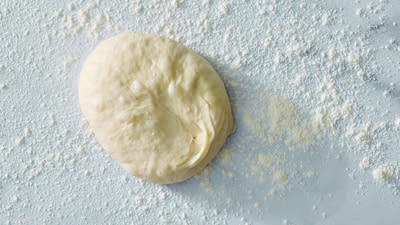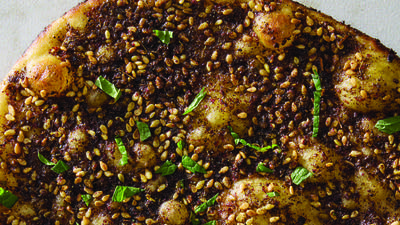
[Recipe: Butter-basted Pan-seared Thick-cut Steaks]
Let me explain. No, there is too much. Let me sum up:
1. Dry your steak and season liberally at least 45 minutes before cooking. A wet steak will not brown properly, as energy from the pan will go into evaporating the excess moisture rather than browning the steak properly. Salting your steak and letting it rest will draw out some moisture at first, but eventually, as muscle fibers break down, that moisture will be sucked back into the meat, leaving you with a well-seasoned, perfectly dry surface.

2. Room temperature? Don’t bother. For better results, place your steak on a rack set in a rimmed baking sheet in the fridge for up to 3 days. I’ve found that even after resting at room temperature for 2 hours, when cooked side by side with a steak straight from the fridge, the results are completely indistinguishable. Don’t bother.
3. Use the heaviest pan you’ve got. The heavier the pan, the more energy it can retain, and the more efficiently your steak will sear. A heavy cast-iron pan is my top choice for searing steak.
4. Manage your temperature. The goal is to get the steak perfectly browned just as it reaches its target internal temperature. For a normal-sized steak, say an inch thick or so, this means using a hot, hot pan. For a thick steak, use a more moderate temperature and baste the meat.

5. Don’t crowd the pan. Too many cold steaks can make even the hottest pan cool too fast to cook effectively. For best results, make sure that your steaks have at least an inch of room around them on all sides. When cooking a large number of steaks, use multiple skillets, cook in batches, or, better yet, take things outdoors to the grill.
6. Flip as often as you’d like. Flipping multiple times not only gets your meat to cook a little faster, it also makes it cook more evenly and develop a crust just as nicely as a single flip will. That said, the difference is minimal, so if you don’t want to flip every 30 seconds, don’t sweat it.

7. If using high heat for a normal-sized steak, don’t add butter and aromatics until close to the end. Butter contains proteins that can aid in browning, but if you add it too early on in the process, it can burn, turning bitter and acrid. Start your steak in oil and add the butter only for the last few minutes of cooking. If you’d like, add some aromatics, like thyme or rosemary stems, bay leaves, smashed garlic cloves, or sliced shallots at the same time. For a thicker steak that is cooked over more moderate heat, the butter can be added a little earlier.

8. Get the edges! Well, assuming you like your steak as thick as I do, there’s a significant edge that sees little to no direct action during the entire searing process, but that edge is often the fattiest, most delicious part of the steak. It deserves love just as much as the next guy. Pick up your steak with tongs and get those edges seared!

9. Rest before serving. For maximum juiciness, it’s important to let your meat rest for at least a few minutes after cooking. This allows muscle proteins to relax and the meat juices to thicken slightly so that they stay in place until the bite of steak reaches your mouth.

Before you go...
Each week, The Splendid Table brings you stories that expand your world view, inspire you to try something new, and show how food connects us all. We rely on your generous support. For as little as $5 a month, you can have a lasting impact on The Splendid Table. And, when you donate, you’ll join a community of like-minded individuals who love good food, good conversation, and kitchen companionship. Show your love for The Splendid Table with a gift today.
Thank you for your support.
Donate today for as little as $5.00 a month. Your gift only takes a few minutes and has a lasting impact on The Splendid Table and you'll be welcomed into The Splendid Table Co-op.



